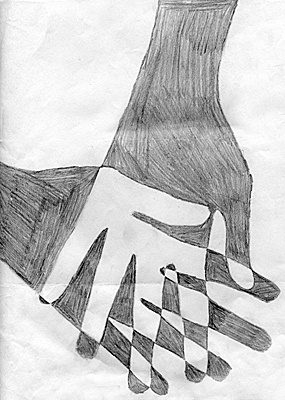All Nonfiction
- Bullying
- Books
- Academic
- Author Interviews
- Celebrity interviews
- College Articles
- College Essays
- Educator of the Year
- Heroes
- Interviews
- Memoir
- Personal Experience
- Sports
- Travel & Culture
All Opinions
- Bullying
- Current Events / Politics
- Discrimination
- Drugs / Alcohol / Smoking
- Entertainment / Celebrities
- Environment
- Love / Relationships
- Movies / Music / TV
- Pop Culture / Trends
- School / College
- Social Issues / Civics
- Spirituality / Religion
- Sports / Hobbies
All Hot Topics
- Bullying
- Community Service
- Environment
- Health
- Letters to the Editor
- Pride & Prejudice
- What Matters
- Back
Summer Guide
- Program Links
- Program Reviews
- Back
College Guide
- College Links
- College Reviews
- College Essays
- College Articles
- Back
Cultural Diversity is a Necessity
Before I was seventeen, I was like the majority of other students I observed in the tenth grade and profusely avoided the group of black students who piled into the right side of the school cafeteria for breakfast every morning. These students wore chains and baggy pants, and called rude remarks to the other students passing by, especially the more vulnerable freshman. I thought these teens to be uncivilized. I could not understand why they did not try to make life easier for themselves by dressing nicely and speaking in a professional manner. One of these students was in a science class of mine, and I became constantly angry with him for disrupting the teacher and ignoring the class rules. I believed this student to be someone who brought unnecessary disciplinary action to himself.
Despite these thoughts, I told myself that I was not a racist. I told myself that the color of these students’ skin had nothing to do with my unease toward them. It was their actions that made me upset, not their skin color, and if they would just act and dress normally then of course I would be willing to accept and befriend them. I could not be a racist because I had black friends, like my friend Allison. Allison, unlike these other students, spoke in a grammatically correct manner. She had a thin waist and wore pretty, flowery clothes to school.
My sophomore year I served on the teen board of a non-profit youth health clinic.
Before its closing in 2011, this clinic served low-income families in North Carolina, most of whom were black. A few board members and I traveled to a nearby middle school one day to help teach young female students about good hygiene. When it came time to discuss hair care, however, something strange happened. The young girls spoke of how they made sure to wash their hair at least once a week. All of us volunteers, who usually washed our hair everyday, were confused- all but one, anyway. The only black girl on our board stepped up at that moment to talk about African American hair care, which the rest of us had not realized could be different than Caucasian hair care.
Later in the seminar, a small girl came up to me and pulled on my ponytail. She said she wished her hair was straight and pretty like mine instead of fluffy like hers.
After this incident, the way I perceived race within my life began to change. I stopped scorning the students that sat in the corner of the cafeteria and instead began to question why the administration surrounded them everyday, without fail, circling them like hawks. I started to realize what it meant that only specific students of color were accepted as friends into my social circle. I also began to understand why so many African American students at my school seemed so unwilling to learn. Just as the needs of the little girls at the middle school were unbeknownst to the majority of us volunteers, the needs of many African American students seem completely lost to my school’s administration and teachers. Not only that, but there are very few teachers of color at my school, something that only increases this cultural gap.
I now understand that racism can cross cultural lines and is not strictly based on skin color. I also understand why institutions that do not serve the needs of many different races leave many important people without the assistance they need. From the day I turned seventeen, I took a personal vow to help create more diversity (and more diverse ways of servitude) in any organization or institution I become a part of. This includes making sure that the Gay-Straight Alliance Club at my school attends to the needs of not just white students, but also students of Hispanic, Asian, Indian, Middle Eastern and African American descent.
Changing my school is the harder part of the puzzle. Advocating for improvement on a level that large can take a large amount of time and effort. I plan to put that effort in.
Although I have not yet decided what I will major in, or what my future career will be, I do know that I will always have a strong commitment to creating a diverse community.

Similar Articles
JOIN THE DISCUSSION
This article has 1 comment.
